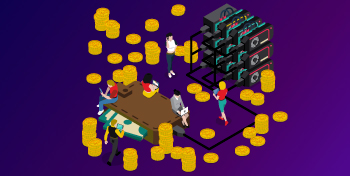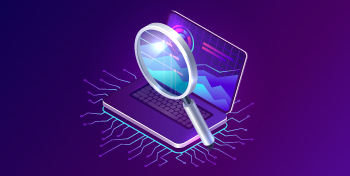With the power of Blockchain and the Internet, our virtual world is ready to take a new leap and merge with our real world (augmented reality) in ways we never even thought of before.
Metaverse: Brave world or utopia
In the last decade, we have become increasingly dependent on the Internet, and the recent pandemic has reinforced our dependence on the virtual ecosystem. While this addiction has served us differently, it has also spawned concepts of identity theft, arbitrary censorship, excessive rent-taking (in the form of privacy costs), or sudden account termination. Thus, few conglomerates or authorities can control our behavior and behavior by controlling our virtual world.
In addition, more time spent online has led to the creation and consumption of more value in digital form. To maximize this value, our society needs to devote serious time and capital to virtual environments, and to do this, the environment must be durable, secure, and reliable. Blockchain turned out to be one of these solutions.
Blockchain has entered our lives as the “light at the end of the tunnel”, as it can save us from the control and censorship of conglomerates and higher authorities, while providing a safe and durable ecosystem. Blockchain has changed our understanding of security from “secure is private” to “secure is public”.
And, thus, the symbiosis of our real world with the virtual one based on the Blockchain will give rise to a world that did not exist before – the Metaverse.
What is Metaverse?
Since the late 1970s and early 1980s, many in the tech community have envisioned the future state of the Internet, if not its near-successor, called the ” Metaverse.” And it will revolutionize not only the infrastructure of the digital world, but also much of the physical world, as well as all the services and platforms based on them, how they work and what they sell.
Although the full vision of the Metaverse is still difficult to define, it seems fantastic, and it is still several decades away, but today parts of it have begun to seem very real. And, as always, with such a change, its exponential curve is as long and unpredictable as its final state is profitable.
To that end, the Metaverse has become the latest macro target for many of the world’s tech giants. This is the main goal of Epic Games, the creator of Unreal Engine and Fortnite. It’s also the driving force behind Facebook’s purchase of Oculus VR and its recently announced virtual world / meeting space Horizon, as well as many other projects such as AR glasses and machine-to-machine communications. The tens of billions that will be spent on cloud gaming over the next decade are also based on the belief that such technologies will underpin our online-offline future. After all, you’ll find many of these things in the offices of the CEOs of major tech companies. And there are many reasons for this.
The metaverse is a digital world in which anything we can imagine can exist. The term “meta” means “beyond”, and therefore the Metaverse is an extension of the universe of physical and virtual reality.
A metaverse is a collective shared virtual space that is created when the physical realm converges with the virtual, and includes virtual reality, augmented reality, and the Internet. The Metaverse has the potential to become a separate individual economy in the next decade.
The most common concepts of the Metaverse date back to science fiction. Here, the Metaverse is usually depicted as a kind of digital “put-on” Internet-a manifestation of real reality, but based in a virtual world. The concept of the Metaverse can be better understood from the 2018 Steven Spielberg film, an adaptation of Ernest Kline’s book, First Player Get Ready.
There are several other ideas that may be key to the Metaverse, but they are not widely accepted. One issue is whether participants will have a single, consistent digital identity (avatar) that they will use in all cases. This would be of practical value, but unlikely, since each of the leaders of the “age of the Metaverse” will still want to have their own identification systems.
Today, for example, there are several dominant account systems, but none of them have exhaustive network coverage, and they often overlap with each other with limited data exchange / access (for example, your iPhone is based on an iOS account to log in to the app using your Facebook ID, which is itself your Gmail account).
There is also disagreement about how much interaction is required for the Metaverse to truly be a “Metaverse” and not just an evolution of today’s Internet. Many also argue whether a real Metaverse can have a single operator, as in the case of “First Player to prepare”. Some believe that the definition and success of the Metaverse requires that it be a highly decentralized platform built primarily on community standards and protocols, such as the open Internet, and an OS or open source platform.
Another idea is related to the fundamental communication architecture of the Metaverse. While today’s Internet is built around individual servers “talking” to each other as needed, some believe that the Metaverse should be “connected” and “work” with multiple connections. But even here, there is no consensus on how exactly this will work, and on the required degree of decentralization.
It is also useful to know that it is often but incorrectly compared to the Metaverse. While each of these analogies is probably part of it, they are not really a Metaverse. For example:
- Virtual World
Virtual worlds and games with characters controlled by artificial intelligence have been around for decades, as have those populated by” real ” people in real time. This is not a “meta” universe, it is just a synthetic and fictional universe created for one purpose-the game.
Virtual space
This digital content experience, such as “Second Life,” is often seen as a “proto-metaverse” because in it:
(A) there are no game goals or skill systems;
(B) – these are permanent virtual hangouts;
(C) – offers near-synchronous content updates;
(D) – real people are represented by digital avatars.
However, these attributes are not sufficient for the Metaverse.
- Virtual Reality
VR is a way to experience a virtual world or space. The sense of being present in the digital world is not a Metaverse. It’s like saying you have a thriving city, because you can see it and walk around it.
- Digital and virtual economy
They also already exist. Individual games, such as World of Warcraft, have long had a functioning economy in which real people exchange virtual goods for real money, or perform virtual tasks in exchange for real money. In addition, platforms like Amazon’s Mechanical Turk, as well as technologies like Bitcoin, rely on hiring people, businesses, and computing power to perform virtual and digital tasks. We are already carrying out large-scale operations with purely digital goods for purely digital activities through purely digital trading platforms.
- Game
Fortnite has many elements of the Metaverse. He:
(A) – mixes IP;
B) – has a consistent identity that spans multiple closed platforms;
(C) is the gateway to myriad experiences, some of which are purely social;
(D) – compensates developers for creating content, etc.
However, as with Ready Player One, it remains too narrowly focused on what it does, how far it extends, and what “work” can be done (at least for now).
While the Metaverse may have some game goals, include games, and include gamification, it is not a game in itself and is not focused on specific goals.
- Virtual Theme Park
Not only will the “rides” be endless, they won’t be centrally “designed” or programmed like Disneyland, and they won’t all be dedicated to entertainment. In addition, the distribution of engagement will have a very long list.
New App Store
No one needs another way to open apps, nor will “in virtual reality” (as an example) unlock / activate the kinds of values that are supposed to be the successor to the Internet. The metaverse differs significantly from the current models, architecture, and priorities of the Internet and mobile communications.
- New User content platform
The Metaverse is not just another platform like YouTube or Facebook, where countless people can “create”, “share”, and “monetize” content, and where the most popular content represents only a tiny fraction of the total spend. The metaverse will be a place where entire empires will be invested and built, and where these richly capitalized enterprises (corporations) will be able to fully own the client, manage the API / data, the economy, etc. In addition, it is likely that, as with the Internet, about a dozen platforms will take up a significant share of user time, experience, content, etc.
It is important to understand that for the existence of the Metaverse, it is not necessary to include the blockchain, but to make the ecosystem more fair and secure for all participants, the blockchain will play a key role in its development.
Now let’s discuss in more detail the integration of the Metaverse with blockchain and cryptocurrencies.
Crypt Meets Metaverse
Digital assets and cryptocurrency seem to be the most important vertical contributing to the emergence of a true Metaverse. Hence, we hear about NFT everywhere.
Non-interchangeable tokens are the first step towards integrating individual ownership with digital assets. What NFT provides for the first time is a decentralized, universal digital representation and a level of ownership through which rarity, uniqueness, and authenticity can be transparently managed.
Thus, cryptocurrency can become the cornerstone of the Metaverse.
Why do you need to know about this
Now let’s talk about the elephant in the room, why we dump so many technical things on your head. Just because we see it as our future, and we would like you to see it too.
Today, the 10 largest companies in the world are those who adopted the Internet when no one else knew about it, or, if they did, they were very skeptical about it. We may be the first determinants of the potential Internet of the new century.
There are a number of crypto projects that are trying to create a full-fledged digital ecosystem based on the blockchain. And since it is based on the blockchain, we can participate in projects by owning their tokens.
There is no limit to what everything can be done in this space. Therefore, it is clear that this is the idea of a new generation of technologies that can change the world and our portfolios forever in the near future. Here you just need to ask yourself: Metaverse-a wonderful world or a utopia? What will happen to humanity if this world turns out to be in the wrong hands?1


